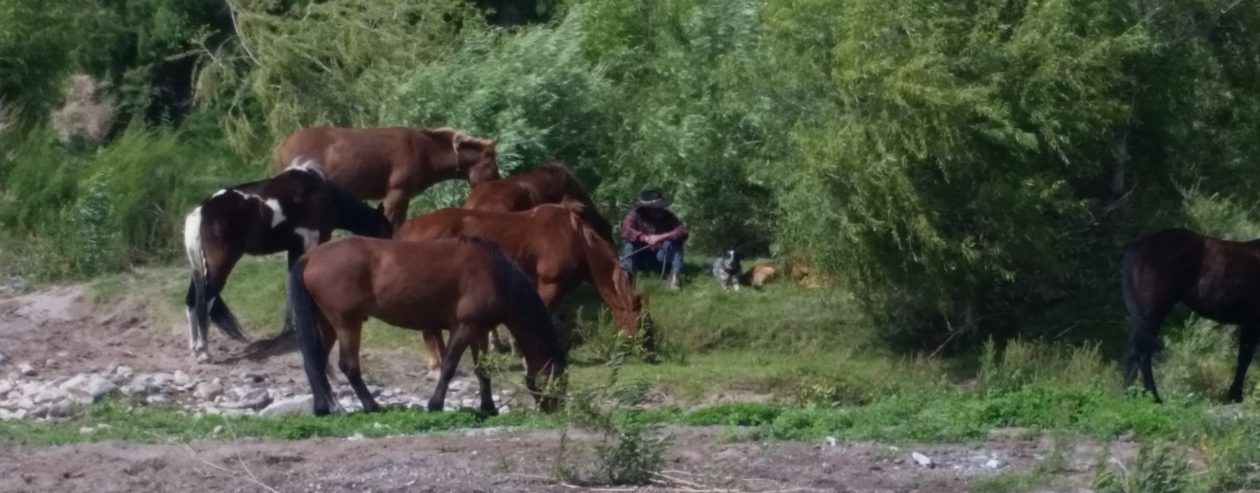I just received a couple of nose feed bags from Trailhead Supply. I ordered a nylon mesh one and a canvas/leather one to see which I like better. Both have tags indicating they were made by Richland Yellowstone Mfg., Sidney, MT.
The mesh one seems to be made well. It has a canvas bottom and the mesh is sewn to the canvas in two places, one line of stitch low down and another near the top of the canvas, which I would suppose would add to the durability. The mesh seems to be made of thin woven vinyl lace, which appears to be pretty durable. My only concerns are the single line of stitching holding the straps to the bag and the plastic buckle. Never liked plastic buckles. A good buy at $14.95, I thought. We’ll see.
The canvas bag was a bit more expensive, at $21.95, still a good buy, comparing at $39.99 from another supplier. I would have to believe this bag will be more durable than the mesh bag, being as it is made of heavy canvas and leather. Feels like maybe a #6 canvas with high-quality leather straps and bottom, which I like. I also like the steel adjustment buckle. It won’t fold up as quite small as the mesh bag, and it’s a little heavier, but there’s not enough difference to be a decision maker. The one concern I have with the canvas bag is that the breathing panel is situated too close to the bottom of the bag for my taste. I have seen horses stop feeding in a bag, because their breathing was restricted. I’m not sure the breathing panel wouldn’t be covered up with three or four pounds of alfalfa pellets in there. If the maker were to raise the air-hole panel up about two inches, I wouldn’t have any complaints.
I’m going to give both of these some use and see which I like best. I’ll report back later.









I just noticed that Trailhead Supply has used my photograph of the feedbags (top right) on their website blog about feedbags. They brought up a good point about the breathing panel placement on the canvas bag. They indicated they have heard reports of horses drowning from getting water in the bag and it not draining out, because the holes were located too high. I guess that’s sufficient reason to locate the air holes low down on the bag. I would think a couple holes placed in the bottom with grommets might be an additional safeguard against that, and might allow the air hole panel to be located a little higher as well.
Since they used my photo in their blog, evidence that they have at least read my blog post, I wonder if they might be interested in sponsoring me and Dad for our Mexico to Canada ride next year (hint, hint). I could sure give good test reports of their gear!
TH